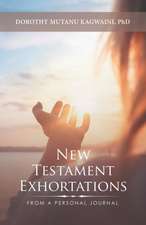Analysis of Economic Data
Autor G Koopen Limba Engleză Paperback – 21 feb 2013
It introduces students to basic econometric techniques and shows the reader how to apply these techniques in the context of real-world empirical problems. The book adopts a largely non-mathematical approach relying on verbal and graphical inuition and covers most of the tools used in modern econometrics research. It contains extensive use of real data examples and involves readers in hands-on computer work.
Preț: 399.79 lei
Nou
76.51€ • 79.58$ • 63.16£
Carte disponibilă
Livrare economică 22 martie-05 aprilie
Livrare express 08-14 martie pentru 34.56 lei
Specificații
ISBN-10: 1118472535
Pagini: 272
Dimensiuni: 170 x 244 x 15 mm
Greutate: 0.44 kg
Ediția:4th Edition
Editura: Wiley
Locul publicării:Chichester, United Kingdom
Public țintă
Analysis of Economic Data is written primarily for undergraduate students taking introductory courses in the analysis of economic data. These courses can appear at different stages of the undergraduate curriculum and are often taken by social science or business students who are not majoring in economics. This course can also be taken by students on MBA courses.Cuprins
Chapter 1 Introduction. Chapter 2 Basic Data Handling. Chapter 3 Correlation. Chapter 4 An Introduction to Simple Regression. Chapter 5 Statistical Aspects of Regression. Chapter 6 Multiple Regression. Chapter 7 Regression with Dummy Variables. Chapter 8 Several Limited Dependent Variable Models Chapter 9 Regression with Time Lags: Distributed Lag Models. Chapter 10 Univariate Time Series Analysis. Chapter 11Regression with Time Series Variables. Chapter 12 Applications of Time Series Methods in Macroeconomics and Finance. Chapter 13 Limitations and Extensions. Appendix A Writing an Empirical Project Appendix B Data Directory
Descriere
Analysis of Economic Data has, over three editions, become firmly established as a successful textbook for students studying data analysis whose primary interest is not in econometrics, statistics or mathematics.
It introduces students to basic econometric techniques and shows the reader how to apply these techniques in the context of real-world empirical problems. The book adopts a largely non-mathematical approach relying on verbal and graphical inuition and covers most of the tools used in modern econometrics research. It contains extensive use of real data examples and involves readers in hands-on computer work.



















